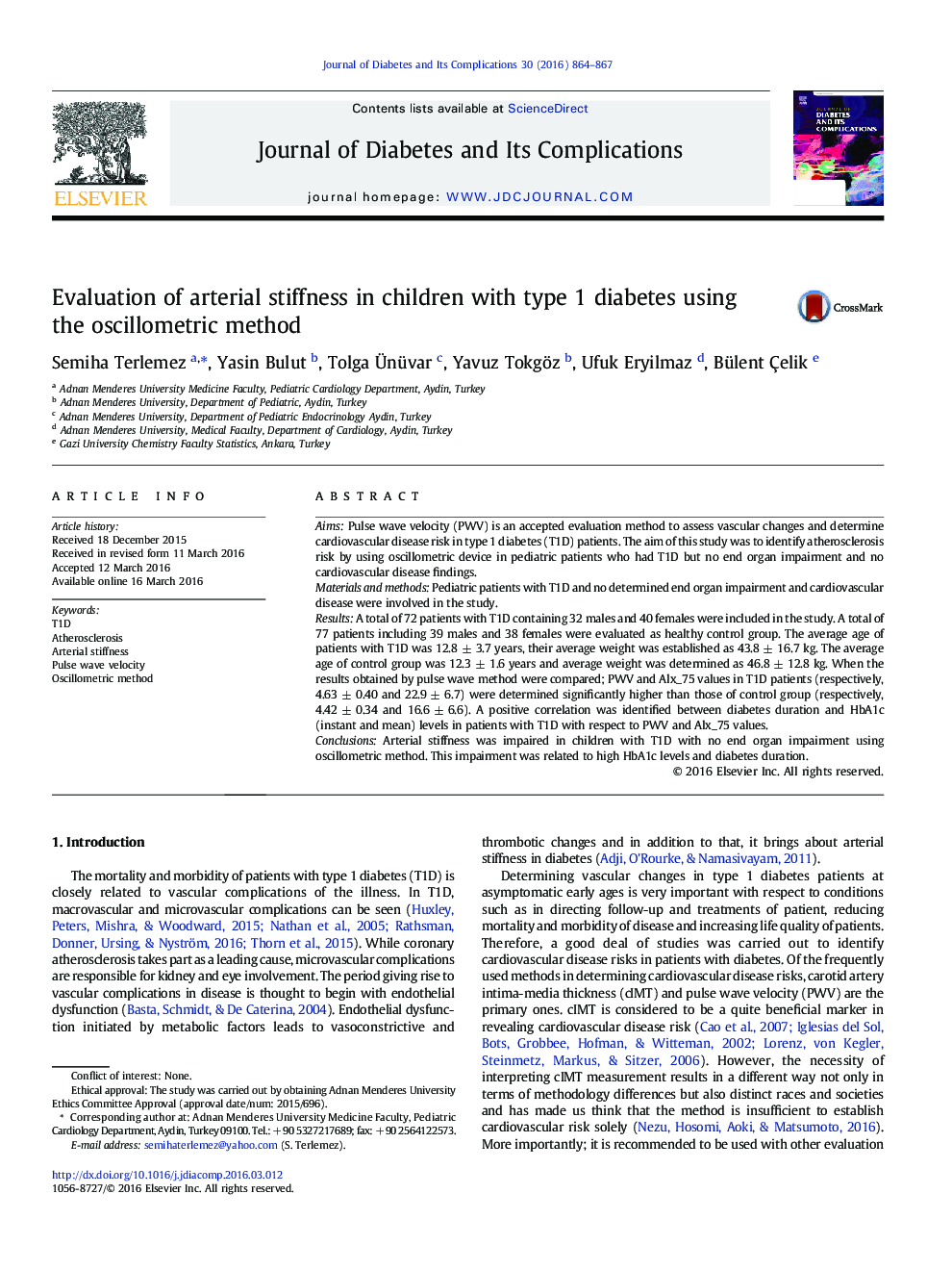| Article ID | Journal | Published Year | Pages | File Type |
|---|---|---|---|---|
| 2804090 | Journal of Diabetes and its Complications | 2016 | 4 Pages |
AimsPulse wave velocity (PWV) is an accepted evaluation method to assess vascular changes and determine cardiovascular disease risk in type 1 diabetes (T1D) patients. The aim of this study was to identify atherosclerosis risk by using oscillometric device in pediatric patients who had T1D but no end organ impairment and no cardiovascular disease findings.Materials and methodsPediatric patients with T1D and no determined end organ impairment and cardiovascular disease were involved in the study.ResultsA total of 72 patients with T1D containing 32 males and 40 females were included in the study. A total of 77 patients including 39 males and 38 females were evaluated as healthy control group. The average age of patients with T1D was 12.8 ± 3.7 years, their average weight was established as 43.8 ± 16.7 kg. The average age of control group was 12.3 ± 1.6 years and average weight was determined as 46.8 ± 12.8 kg. When the results obtained by pulse wave method were compared; PWV and Alx_75 values in T1D patients (respectively, 4.63 ± 0.40 and 22.9 ± 6.7) were determined significantly higher than those of control group (respectively, 4.42 ± 0.34 and 16.6 ± 6.6). A positive correlation was identified between diabetes duration and HbA1c (instant and mean) levels in patients with T1D with respect to PWV and Alx_75 values.ConclusionsArterial stiffness was impaired in children with T1D with no end organ impairment using oscillometric method. This impairment was related to high HbA1c levels and diabetes duration.
